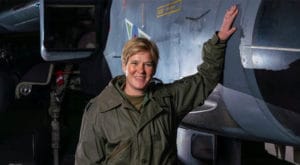Inclusive companies are 1.7 times more likely to be innovation leaders in their industry.
You’ve done it all.
You hire external consultants, pay your employees fairly, offer respectable benefits, invest in learning and development, encourage new ideas and support your employees well being.
You think you’ve done it all, but have you?

“The friction which results from ignorance … can be reduced only by the spread of knowledge and the unification of the heterogeneous elements of humanity. No effort could be better spent.” – Nikola Tesla
Diversity brings change. Change is the catalyst for innovation.
How do you view conflict? Do you view it positively or negatively?
On the one hand, too much conflict causes negative disruption. On the other hand, a healthy amount of conflict promotes conversation, discussion and evolution.
If all members of your team think exactly the same way, come from the same backgrounds and uphold the same ideals, then your organisation is likely to become stagnant.
There are two sides to the diversity and inclusion conversation: the human side and the business side.

From a human perspective, diversity and inclusion promotes employee growth, employee happiness, organisational culture and employee retention.
From a business perspective, diversity and inclusion supports financial gains, higher returns on investment, employee performance and corporate reputation.
Where do you start?
Here are some steps you can begin implementing to improve diversity and inclusion in your organisation:
1. Review your hiring process
Does your hiring process support diversity and inclusion? Look at your job postings and evaluate the language you use to ensure it’s inclusive. Discuss the hiring process with your hiring managers to ensure they’re confident to apply appropriate and inclusive hiring methods.
2. Analyse your work policies
Do your work policies include, support and empower all members of your organisation? What are your organisation’s current diversity and inclusion policies? You may find it necessary to update policies regarding working from home, flexible working or hiring policies.
3. Assess your organisational culture
Organisational culture includes everything in your organisation, including your policies, your employees and your norms. Organisational culture is a complex structure and can pose a challenge to analyse. You may identify norms that exist within your organisation that are harmful to diversity and inclusion.
If you want to achieve ultimate success in your organisation, diversity and inclusion is a critical piece of the puzzle.
Want to read more? Browse our blogs below.

From Fighter Jet to Boardroom: Lessons in Decision-Making from Mandy Hickson
At twice the speed of sound, decisions aren’t a luxury — they’re survival. Few people understand high-stakes decision-making better than Mandy Hickson, one of the RAF’s first female fast-jet pilots. Mandy’s career took her from flying Tornado GR4 fighter jets in war zones to standing on global stages as a leadership speaker. Today, she shares lessons that resonate as powerfully in boardrooms as they did in the cockpit. At Pendulum Summit, Mandy brings these insights to life, helping leaders transform pressure into performance. Here’s what business professionals can learn from Mandy Hickson’s leadership lessons. Clarity Under Pressure Mandy describes flying a Tornado GR4 through valleys at nearly 700 miles an hour, flames pouring from the engines, and knowing that one wrong move could spell disaster. Yet even in these moments, she returns to basics: “You can’t control the chaos, but you can control your response.” Leaders, too, must filter signal from noise. In business, it’s easy to be paralysed by data overload or fast-changing circumstances. Mandy’s experience reminds us that great decision-making often comes down to focus: knowing what matters most and trusting yourself to act. Trust in Your Team Mandy shares vivid stories of how teamwork saved her career. After failing tactical formation flying, her RAF colleagues spent hours in a hangar, cycling in formation on bicycles to help her master complex manoeuvres. “Trusting your teammates is implicit. It’s what will keep us safe in the air.” Business leaders must foster the same trust. True high-performance teams don’t just work together — they sacrifice for each other, share knowledge freely, and help colleagues rise. As Mandy puts it, trust is built on credibility, reliability, and selflessness. Preparation Turns Fear Into Confidence Whether dogfighting or refuelling mid-air at night, Mandy’s stories highlight one truth: excellence under pressure starts long before the crisis hits. “I’d rather sweat in training than bleed in combat.” In business, this translates to: Scenario planning Rehearsing crisis responses Building mental resilience before challenges appear Mandy’s meticulous training helped her navigate moments like a missile locking onto her aircraft over Iraq — and survive to tell the tale. Calm Authority in High Stakes Even when facing missiles, Mandy maintained composure. In her words, “one wrong move and it could all go disastrously wrong” — but panic helps no one. Her cool authority in stressful situations inspires confidence. Business leaders, too, are judged on how they carry themselves during crises. Calm authority: Reassures teams Keeps communication clear Anchors decision-making under pressure Mandy proves that courage isn’t the absence of fear — it’s taking action despite it. Debrief and Learn Every mission in the RAF ends with a debrief — a practice Mandy calls non-negotiable. Pilots analyse what went well, what didn’t, and how to improve, without blame or ego. “Debriefs aren’t about punishment. They’re about being better next time.” Businesses often rush past the debrief. Yet the most successful teams pause to: Reflect on outcomes Understand why mistakes happened Build stronger processes for next time Mandy’s commitment to debriefing even after a 19-hour mission underscores that learning never stops. Overcoming Bias and Barriers Mandy’s path wasn’t easy. When she first applied to become a fast-jet pilot, she failed every test — twice. Initially offered a role as an air traffic controller, she refused to accept the limits placed on her: “I thought, they’re taking me on for who I am. Maybe it’s up to me to prove the system is flawed.” Her persistence changed RAF testing protocols, proving that sometimes the system — not the individual — needs fixing. For businesses striving for diversity and inclusion, Mandy’s journey is a powerful reminder that talent can thrive if given the chance. Humour and Humanity Despite her military precision, Mandy is disarmingly funny. She shares stories of being nicknamed Big Bird instead of the glamorous call signs she’d imagined, and the time her son worried about “speed police” in the sky. Even in war zones, she recalls moments of levity: RAF pilots constructing cardboard cockpits to practise manoeuvres A French navigator praising her appearance, only to be told she’s “one of the boys” This humour is part of her leadership style — connecting with people, breaking tension, and building authentic relationships. Lessons for Business Leaders Mandy Hickson’s leadership lessons remind us that: Pressure reveals character Trust transforms teams Preparation builds confidence Debriefing drives improvement Authenticity and humour are leadership superpowers Whether navigating missiles or market crises, the principles are the same: stay focused, trust your people, and never stop learning. At Pendulum Summit, Mandy shares these stories and lessons firsthand, showing how elite military thinking can transform leadership in any field. “You’ll never know what you can achieve unless you try.” Looking Ahead to Pendulum 2026 If this year’s event is anything to go by, Pendulum Summit 2026 is set to raise the bar yet again. The early buzz suggests another powerhouse line-up and even more tailored leadership content. Tickets are already in demand, with early-bird packages available now for teams looking to secure their place at the world’s leading business and self-empowerment summit. Visit here for more information.

From Dysfunction to Dynasty: Christian Horner’s Leadership Lessons at Red Bull Racing
Christian Horner’s departure from Red Bull Racing has sent shockwaves through the Formula 1 world. After nearly two decades as Team Principal — and a record-breaking run of Constructors’ and Drivers’ Championships — Horner has officially been sacked from the team he helped transform into a global powerhouse. While headlines swirl about internal tensions and off-track controversies, there’s another side to Horner’s story that deserves attention: the leadership lessons he shared on stage at Pendulum Summit. Because before he was a headline, Horner was a young leader facing an enormous challenge — and his journey offers insights for any business facing chaos, change, or crisis. Stepping into Chaos When Horner first arrived at Red Bull Racing in 2005, he wasn’t greeted with champagne or celebrations. Instead, he found a team in disarray: “There’d been a revolving door of management… people were afraid to stick their head over the parapet. They weren’t working as a team — just blaming each other.” Half-drunk coffee sat on desks. Christmas cards lay half-open. A secretary was in tears. “The drawing office blamed manufacturing. Manufacturing blamed the aerodynamic department. The aerodynamic department blamed the wind tunnel. And the race team blamed everybody.” Horner was just 31. Many in the team looked at him and thought: “This kid won’t last long.” But he did far more than last. He changed everything. Earning Trust as a Young Leader In Horner’s words at Pendulum Summit, the first step was simple yet powerful: understand what you’ve inherited. Instead of imposing immediate changes, he: ✅ Listened carefully✅ Studied the culture and the reasons behind dysfunction✅ Identified who felt marginalised or afraid to speak up He knew trust wasn’t automatic — especially for someone young and new. He focused on building relationships, not just issuing directives. Breaking Down Silos One of Horner’s biggest observations from his early days: “People weren’t working as a team — they were just blaming each other.” This wasn’t unique to motorsport. Any business can fall into silo mentality. Horner set out to: Create open communication across departments Break the cycle of blame Align everyone around shared goals rather than individual interests At Pendulum Summit, his message was clear: Championships are not won by departments. They’re won by unified teams. Culture Before Championships Horner didn’t turn Red Bull into a dynasty overnight. It took years of cultural transformation — shifting from fear and blame to psychological safety and shared purpose. The results speak for themselves: Multiple Constructors’ Championships Drivers’ titles for Sebastian Vettel and Max Verstappen A reputation for relentless innovation and resilience But Horner’s Pendulum Summit insights reveal the truth: behind every trophy lies a cultural journey. Facing the Leadership Paradox Now, with Christian Horner officially sacked, a bigger leadership question emerges: Is principled leadership sometimes costly — or is it the only path to lasting success? Over the past 18 months, Horner has faced: Intense public scrutiny Reports of internal power struggles after Red Bull founder Dietrich Mateschitz’s death Investigations into alleged inappropriate behaviour (which he has denied and was reportedly cleared) Constant pressure to maintain Red Bull’s performance amid shifting politics These events remind us that even the strongest leaders are vulnerable to forces beyond their control. Yet Horner’s story — shared candidly at Pendulum Summit — underscores that true leadership often means stepping into dysfunction and having the courage to transform it. Leadership Takeaways From Christian Horner’s journey, leaders everywhere can draw powerful lessons: ✅ Diagnose culture before chasing results✅ Earn trust through listening, not titlesBreak down silos to unleash true team performance✅ Create psychological safety so people feel safe to contribute✅ Recognise that principled leadership sometimes comes at personal cost A Final Thought Christian Horner’s tenure at Red Bull Racing may have come to an unexpected end. But the leadership lessons he shared on the Pendulum Summit stage remain timeless. In his own words: “People weren’t working as a team — they were just blaming each other.” Thanks to Horner’s leadership, those same people became world champions. At Pendulum Summit, we believe great leadership isn’t just about celebrating success — it’s about transforming chaos into opportunity. Looking Ahead to Pendulum 2026 If this year’s event is anything to go by, Pendulum Summit 2026 is set to raise the bar yet again. The early buzz suggests another powerhouse line-up and even more tailored leadership content. Tickets are already in demand, with early-bird packages available now for teams looking to secure their place at the world’s leading business and self-empowerment summit. Visit here for more information.

How to Create Habits for Long-Term Personal Success
At Pendulum Summit, we believe that long-term personal success isn’t built on fleeting bursts of motivation. Instead, it’s shaped by small, consistent habits woven into our daily routines. Many world-class speakers who have graced the Pendulum stage share the same message: lasting transformation comes not from dramatic overhauls, but from sustainable habits repeated over time. In this article, we explore practical, science-backed insights from Pendulum Summit speakers on how to create habits for long-term personal success. Why Motivation Isn’t Enough Dr. Heather McKee, Europe’s leading health behaviour change specialist and a Pendulum Summit speaker, often explains that relying solely on motivation can derail your progress. She puts it clearly: “Willpower is a finite resource… What sustains long-term change is the development of habits that become second nature.” (Source: BBC Radio, Sunday Morning Live, 2022) Instead of hoping you’ll “feel like it,” focus on building routines that make your desired actions automatic. Start Small and Keep It Simple Tony Robbins, who has spoken at Pendulum Summit, highlights that people often overestimate what they can achieve in a year and underestimate what they can achieve in a decade. He writes: “Most people overestimate what they can accomplish in a year — and underestimate what they can achieve in a decade.” (Source: Tony Robbins, Awaken the Giant Within, 1991) The lesson? Start small. Instead of trying to overhaul your entire lifestyle, pick one tiny habit and build from there. For example: Write one sentence in a journal each day. Walk for five minutes after lunch. Drink a glass of water as soon as you wake up. Small wins create momentum and make it easier to tackle bigger goals. Make Your Environment Work for You Dr. Heather McKee also talks about designing environments that support good habits. It’s often easier to change your surroundings than to rely on sheer willpower. Practical ways to set yourself up for success include: Keeping your running shoes by the door so you’re more likely to exercise. Putting healthy snacks where you can easily see them. Logging out of distracting apps during work hours. These small adjustments make the healthy choice the easy choice. Connect Habits to Your Identity While not yet a Pendulum Summit speaker, James Clear, author of Atomic Habits, shares an idea echoed by many Pendulum speakers: lasting habits stick when they become part of who you are. Don’t just focus on what you want to do. Focus on who you want to become. For example: Instead of “I want to write a book,” think “I am a writer.” Instead of “I want to run a marathon,” say “I am someone who runs regularly.” This shift makes your habits feel natural instead of forced. Build Resilience Through Daily Disciplines Adventurer and Pendulum Summit speaker Bear Grylls often shares how simple daily disciplines keep him prepared for life’s challenges. Even small habits like tidying your workspace, taking a cold shower, or doing a short workout build mental resilience. These routines help you stay committed, even when conditions aren’t perfect. Practical Steps for Creating Habits Drawing on insights from Pendulum Summit speakers, here are clear steps you can start today: Start tiny. Pick a habit so small it feels impossible to skip. Anchor habits. Attach new habits to something you already do, like meditating after brushing your teeth. Shape your environment. Remove obstacles and add cues to prompt your habit. Track your progress. Use a simple journal or app to see your streaks grow. Be patient. Habits take time—focus on consistency, not perfection. Final Thoughts Pendulum Summit brings together experts who help people unlock their full potential and create real, lasting change. Their message is clear: habits are the architecture of success. Instead of waiting for motivation, start small, be consistent, and watch how tiny actions can transform your life over time. So ask yourself today: What’s one small habit you can start to move closer to the person you want to become? Explore More: Discover speakers like Dr. Heather McKee and others who inspire sustainable growth and peak performance at Pendulum Summit: https://pendulumsummit.com/ Looking Ahead to Pendulum 2026 If this year’s event is anything to go by, Pendulum Summit 2026 is set to raise the bar yet again. The early buzz suggests another powerhouse line-up and even more tailored leadership content. Tickets are already in demand, with early-bird packages available now for teams looking to secure their place at the world’s leading business and self-empowerment summit. Visit here for more information.

Tech-Driven Wellbeing: Balancing High Performance and Mental Health
In an always-on world where ambition is celebrated and busyness is worn like a badge of honour, there’s a rising undercurrent of fatigue, one that leaders can no longer afford to ignore. While striving for high performance, many professionals silently carry the weight of stress, burnout, and digital overload. According to Deloitte’s 2024 Global Human Capital Trends report, 64% of executives say they frequently feel depleted at work, and yet less than a third have taken meaningful steps to address it. The solution? It’s not about doing less..it’s about doing things differently. Welcome to the era of tech-driven wellbeing: where performance and mental health are no longer in opposition, but part of the same strategy. Why Tech-Enabled Resilience Matters In leadership today, emotional intelligence and mental fitness are as critical as strategy or execution, but developing these traits in isolation is no longer enough. We now have powerful tools, whether it is on our wrist, in our pocket, or on our desktops, that can amplify wellbeing through simple, science-backed nudges. Tech isn’t the enemy of wellbeing, when used mindfully, it’s one of our greatest allies. 1. Mindfulness: Reset in Real Time Gone are the days when meditation required a quiet room and 30 minutes of stillness. Well known tools like Headspace and Calm offer 1–5 minute breathing techniques, mental resets, and sleep prep content designed for real-world schedules. 🔸 Why it works: Short, consistent mindfulness breaks have been shown to reduce cortisol, improve cognitive flexibility, and enhance decision-making under pressure. 🔸 Try this: Lets say you have an important meeting that is causing some anxiety, why not try a 2-minute breathing exercise beforehand? You’ll get clearer focus and calmer conversation. 2. Wearables: Your Body’s Feedback Loop Smart devices have evolved far beyond step counters. Today, they offer real-time insight into how your body responds to stress, rest, and effort – an insight that can be a game-changer for leadership performance. Tracking things like heart rate variability (HRV), sleep quality, and resting heart rate can help you: Notice early signs of burnout Align demanding work with high-energy periods Make informed decisions about rest and recovery This isn’t about chasing perfect metrics, it’s about tuning in. The more you understand your body’s signals, the better you can manage your energy across the week, not just your time. 3. Micro-Breaks: Big Results from Small Shifts High performers often push through fatigue in the name of discipline. But science says it’s not sustainable. According to the Draugiem Group’s productivity study, the most productive people work in focused sprints of 52 minutes, followed by a 17-minute break. This rhythm supports cognitive endurance and reduces decision fatigue. 🔸 How to implement: Build movement into your natural routine.. Why not stand up during calls, walk between meetings, or do light stretches while reviewing notes? Set recurring “reset blocks” in your calendar. 5–10 minute windows between meetings will help in recharge. 4. Designing for Cognitive Recovery One of the most overlooked elements of high performance isn’t effort, it’s recovery. Not in the athletic sense, but in how we structure our digital environments to support mental clarity. Studies from the University of California Irvine found that frequent digital interruptions like emails and notifications can increase stress, reduce accuracy, and significantly extend task completion time. Instead of defaulting to constant availability, consider structuring your day around cognitive sprints and digital boundaries: Silence non-essential alerts during deep work blocks. Use natural transitions like walking to lunch or winding down after meetings as reset points. Reflect briefly after intense work sessions to re-centre attention and regulate stress. These small, intentional boundaries help the brain reset and recover, making it easier to return to high-focus states throughout the day. Final Thought: Tech Won’t Replace Grit—But It Will Support It Sustained performance isn’t about more hustle. It’s about designing your day—and your data—to support you. By blending self-awareness with smart tools, leaders can extend their energy, sharpen their edge, and most importantly, protect their mental health. The best of both worlds isn’t a myth. It’s a method. Looking Ahead to Pendulum 2026 If this year’s event is anything to go by, Pendulum Summit 2026 is set to raise the bar yet again. The early buzz suggests another powerhouse line-up and even more tailored leadership content. Tickets are already in demand, with early-bird packages available now for teams looking to secure their place at the world’s leading business and self-empowerment summit. Visit here for more information.

Navigating Hybrid Work: Real-Life Success Stories
The Future of Flexibility Is Now.. The world of work has changed, but the conversation is far from over. As more organisations solidify hybrid models, leaders face new questions: How do we balance autonomy with accountability? Culture with flexibility? Performance with presence? At Pendulum Summit, we’ve seen these questions tackled head-on by forward-thinking leaders and global experts. And one thing is clear: hybrid success isn’t about simply splitting time between home and office, it’s about redesigning how we work, lead, and connect. Hybrid Is Here, and Employees Want It That Way Morgan McKinley’s 2024 report revealed a striking truth: 92% of employees in Ireland now prefer a hybrid or fully remote setup. Only 8% favour a full-time office return, yet 42% of employers are pushing for it. That disconnect is creating tension—but also opportunity. The takeaway? Companies that listen, adapt, and evolve their hybrid approach will win the war for talent. Hybrid isn’t just a perk anymore. It’s an expectation. From Logistics to Leadership: What Real Hybrid Success Looks Like At Pendulum 2025, Christine Armstrong delivered practical wisdom on the mindset and infrastructure needed to thrive in hybrid environments. The top takeaways from their keynotes? : Build trust through clarity, not control Replace presenteeism with purpose-driven outcomes Prioritise communication rituals that bring people together, not just online 🎥 Check out this short clip from Pendulum Summit 2025 of Christine Armstrong on the Push-Pull of Office Culture Rethinking Communication: Why Fewer Meetings Can Mean More Progress One of the biggest challenges in hybrid work? Constant meetings. Back-to-back Zoom calls leave little room for deep thinking and focused work. That’s why more high-performing teams are embracing non-simultaneous communication. This refers to tools and practices that let people respond on their own time instead of always being “on” in real-time. Think: Shared project boards that track progress Recorded updates instead of live check-ins Written feedback instead of endless video calls This kind of flexibility lets team members work when they’re most productive, while still staying aligned. The key is clarity..clear expectations, timelines, and goals. It’s not about cutting connections, it’s about creating space for focus and flow. Hybrid Is a Leadership Test Stanford research shows that hybrid workers (2 days remote, 3 days in-office) are just as productive and less likely to quit than their fully in-office counterparts. But the deciding factor isn’t the model, it’s the manager. Leaders who succeed in hybrid environments: Create psychological safety regardless of location Champion flexibility without sacrificing accountability Recognise and reward output, not just availability These aren’t soft skills. They’re survival skills for the new world of work. Final Thought: Hybrid Done Right Isn’t a Compromise—It’s a Competitive Edge The future of work isn’t about choosing between remote and in-person, it’s about finding what unlocks your team’s best performance. When designed with intention, a hybrid work model becomes more than just that, it becomes a culture of trust, autonomy, and growth. And that’s what every leader at every level should be striving for in 2025 and beyond. Looking Ahead to Pendulum 2026 If this year’s event is anything to go by, Pendulum Summit 2026 is set to raise the bar yet again. The early buzz suggests another powerhouse line-up and even more tailored leadership content. Tickets are already in demand, with early-bird packages available now for teams looking to secure their place at the world’s leading business and self-empowerment summit. Visit here for more information.

The Science of Networking: Making Meaningful Connections
🤝 It’s Not Just Who You Know… You’ve heard the phrase: “Your network is your net worth”, but let’s be honest: networking often feels forced, awkward, or overly transactional. Business cards get exchanged, LinkedIn connections made, but the conversation ends there. What if we told you that real networking, the kind that shapes careers, sparks ideas, and supports wellbeing is actually backed by science? This edition of the Pendulum Newsletter breaks down what research tells us about meaningful human connection, and how to build a network that’s truly worth having. 1. Your Brain Is Built for Bonding We are hardwired to connect. Social interaction isn’t just a nice-to-have, it’s essential for cognitive function, emotional health, and long-term success. Research from the International Journal of Clinical and Health Psychology found that positive social connection activates the same brain reward centres as money and food. Meanwhile, social isolation has a comparable health risk to smoking 15 cigarettes a day. In work environments, the data is even more compelling: Gallup found that employees with a “best friend” at work are 7x more likely to be engaged. Teams with strong internal networks show higher resilience, creativity, and retention Connection isn’t a “soft skill”, it’s a survival skill – and a performance one, too. 2. Weak Ties, Strong Outcomes It’s easy to believe that close connections matter most. But it’s actually your looser ties, acquaintances, former colleagues, even one-off conversations that can have the biggest impact on opportunity. In 2022, over 20 million LinkedIn interactions were analysed and found that people were 2-4x more likely to land new opportunities through weak ties than close ones. Why? Because: Weak ties offer fresh perspectives They connect us to new industries and geographies They help us escape echo chambers That five-minute conversation you have in a hallway or during a break? It might just change your trajectory. 3. Good Networking Is Listening, Not Selling We often feel pressure to “stand out” when meeting new people. But research shows that the most likeable, memorable individuals aren’t the ones who talk the most are the ones who ask thoughtful questions. A Harvard Business School study revealed that people who asked follow-up questions were seen as more competent, more empathetic and more trustworthy Try this: Instead of “What do you do?”, ask “What’s something you’re excited about right now?” It leads to a richer, more human interaction. 4. Relationships Are a Long Game In the age of instant everything, networking still takes time. Meaningful professional relationships aren’t built at once, they’re grown over time with small moments of presence, generosity, and follow-up. According to the Journal of Applied Psychology, people who consistently maintain professional relationships (even briefly) experience: Stronger career progression Greater psychological safety at work Higher long-term job satisfaction Networking isn’t an event. It’s a habit. 💬 Final Thought: Fewer Cards, More Conversations The best connections often start in unexpected places with a curious question, a shared insight, or a quiet act of kindness. So if networking feels daunting, remember: it’s not about being the loudest person in the room. It’s about being the most present. Ask well. Listen better. Follow up slowly. That’s where the magic happens. Looking Ahead to Pendulum 2026 If this year’s event is anything to go by, Pendulum Summit 2026 is set to raise the bar yet again. The early buzz suggests another powerhouse line-up and even more tailored leadership content. Tickets are already in demand, with early-bird packages available now for teams looking to secure their place at the world’s leading business and self-empowerment summit. Visit here for more information.
